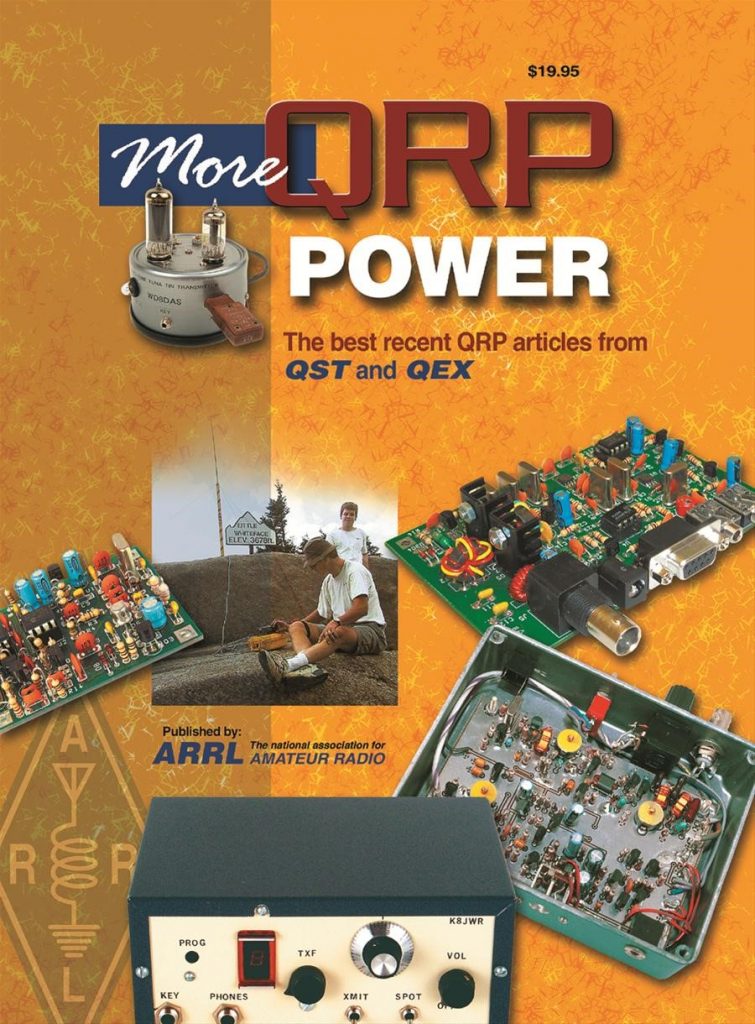One of the most fun activities in Ham radio is learning to build your own equipment. In the early years of amateur radio, long before factory-built equipment was easily available, Hams built their own radios and accessories. Why not continue the tradition? Here are several projects you can easily complete in a few hours or less.
Two Meter Antenna
It’s likely your first Ham radio purchase was a 2 meter or dual-band HT. Unfortunately, the rubber duck antenna that came with it isn’t the best choice for maximum signal. If you’re tired of people telling you your signal is weak, the simplest remedy is an improved antenna.
You’d be surprised how well this simple vertical antenna works, and it can be built with basic materials: wire and coaxial cable. You can tape it up on a wall or window. For outside use, enclose it in 1/2 inch PVC pipe with a tee in the center and end caps.

OCF Antenna for 40-10 Meters
While we’re on the subject of antennas, you may want an antenna for HF contacts. OCF stands for Off Center Fed, and it’s an inexpensive way to cover 40, 20, and 10 meters while not requiring a lot of real estate to set up.
The design is based on a simple dipole, with a twist—you don’t feed it at the center, but off-center. All you need is 66 feet of wire, end insulators, and a 4:1 balun such as an LDG RBA-4:1.

DC Distribution Box
The bigger your shack gets, the more power outlets you’ll need. In a typical shack you might have a 100 watt HF radio, a 50 watt 2m FM radio, an antenna tuner, and a QRP rig that all require 13.8 volts—and your switching power supply may only have one or two connections.
SOTABeams Fuser 6 DC Distribution Box kits incorporate PowerPole connectors and will let you connect up to five accessories to your power source. For safety, all of the connectors are individually fused and the box incorporates a polarity warning system to help avoid damage to your equipment.
All you need to build one is a soldering iron and solder; wire cutter, and screwdriver. Assembly time is about one hour. A four-way kit is also available.

Dummy Load
When you test radio equipment, you need a way to transmit without interfering with other stations. The Elecraft DL1 Dummy Load Kit is a general purpose, wideband dummy load that lets you perform bench-top testing and alignment before connecting to the antenna. An on-board RF detector allows you to calculate power output using a digital voltmeter.
Power rating for the dummy load is 100 watts momentary, 20 watts continuous.

Sound Card Interface
Are you interested in digital communications modes? Unified Microsystems SCI-6 PC Sound Card Interface Kits can get you on PSK31, RTTY, WSJT, and other exciting digital modes by utilizing your PC’s internal sound card. Connect to your PC and radio, and make contacts using software such as FLDIGI.
This kit contains a high-quality, double-sided circuit board with a solder mask and component legends for easy assembly using simple tools. A machined case is included, along with cable for your computer.

QRP Projects
QRP means radio operating with low power—typically 5 watts or less. So why would Hams use low power? It’s easy and inexpensive to build QRP radios and accessories—ones you can take just about anywhere and operate on batteries.
ARRL’s book More QRP Power is a project resource including articles from recent issues of QST and QEX magazines. It covers construction practices, transceivers, transmitters, receivers, accessories, antennas, and more. Presented here are dozens of projects and articles to help you assemble or improve a QRP station for home or travel.


